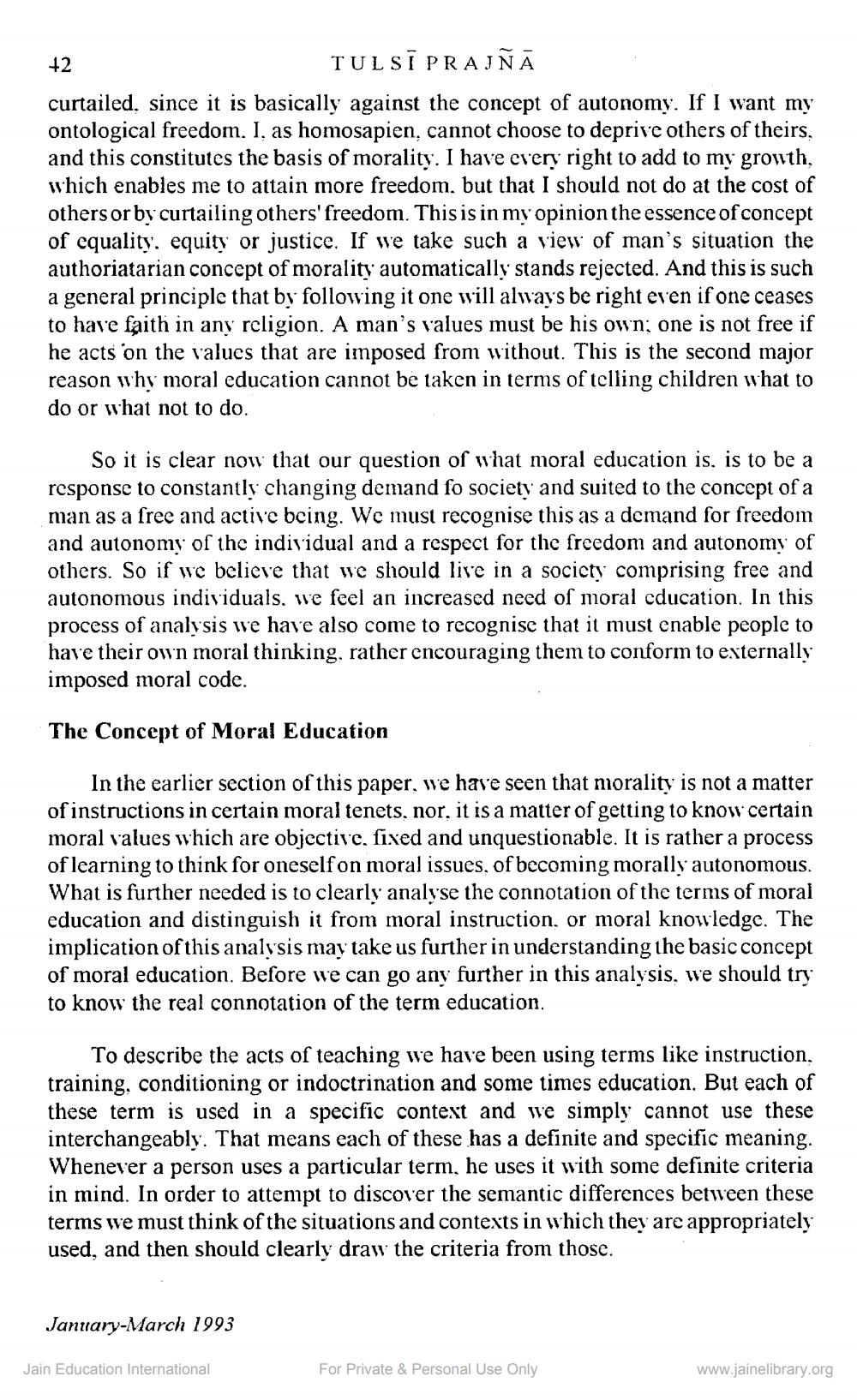________________
+2
TULSĪ PRAJÑA curtailed, since it is basically against the concept of autonomy. If I want my ontological freedom. I. as homosapien, cannot choose to deprive others of theirs, and this constitutes the basis of morality. I have every right to add to my growth,
ch enables me to attain more freedom, but that I should not do at the cost of others or by curtailing others' freedom. This is in my opinion the essence of concept of equality, equity or justice. If we take such a view of man's situation the authoriatarian concept of morality automatically stands rejected. And this is such a general principle that by following it one will always be right even if one ceases to have faith in any religion. A man's values must be his own; one is not free if he acts on the values that are imposed from without. This is the second major reason why moral education cannot be taken in terms of telling children what to do or what not to do.
So it is clear now that our question of what moral education is, is to be a response to constantly changing demand fo society and suited to the concept of a man as a free and active bcing. We must recognise this as a demand for freedom and autonomy of the individual and a respect for the freedom and autonomy of others. So if we believe that we should live in a society comprising free and autonomous individuals, we feel an increased need of moral cducation. In this process of analysis we have also come to recognise that it must enable people to have their own moral thinking, rather encouraging them to conform to externally imposed moral code.
The Concept of Moral Education
In the earlier section of this paper, we have seen that morality is not a matter of instructions in certain moral tenets, nor, it is a matter of getting to know certain moral values which are objective, fixed and unquestionable. It is rather a process of learning to think for oneself on moral issues, of becoming morally autonomous. What is further needed is to clearly analyse the connotation of the terms of moral education and distinguish it from moral instruction, or moral knowledge. The implication of this analysis may take us further in understanding the basic concept of moral education. Before we can go any further in this analysis, we should try to know the real connotation of the term education.
To describe the acts of teaching we have been using terms like instruction, training, conditioning or indoctrination and some times education. But each of these term is used in a specific context and we simply cannot use these interchangeably. That means each of these has a definite and specific meaning. Whenever a person uses a particular term, he uses it with some definite criteria in mind. In order to attempt to discover the semantic differences between these terms we must think of the situations and contexts in which they are appropriately used, and then should clearly draw the criteria from those.
Jantiary-March 1993
Jain Education International
For Private & Personal Use Only
www.jainelibrary.org




